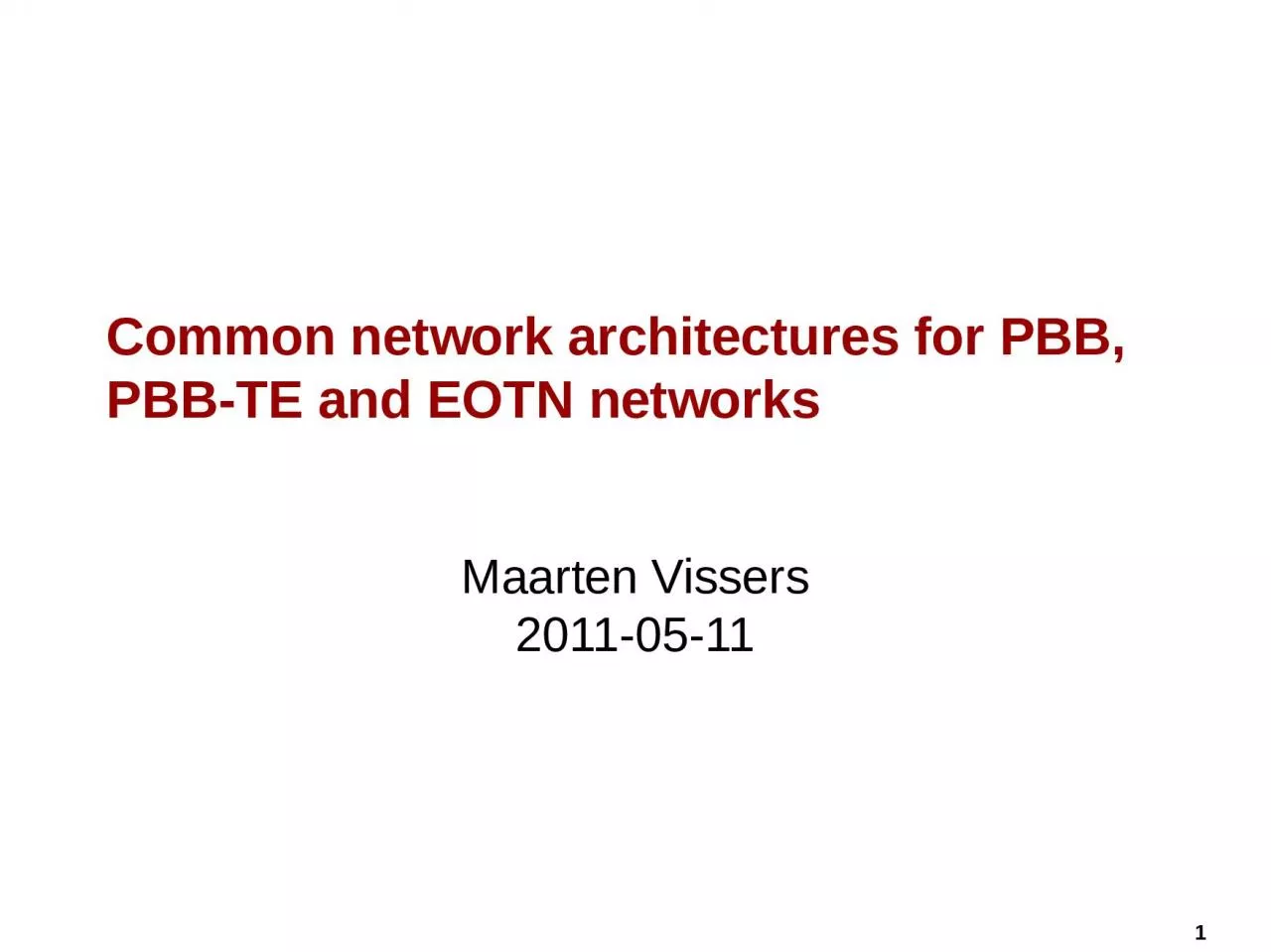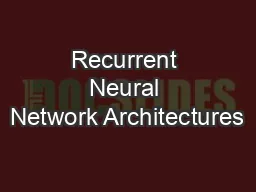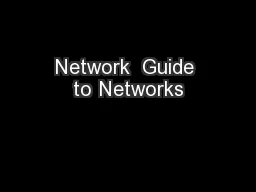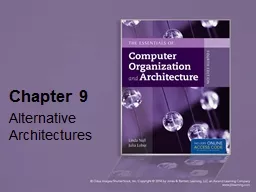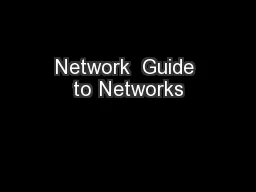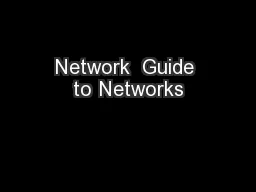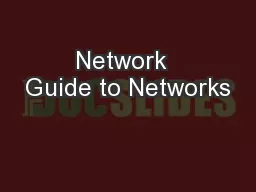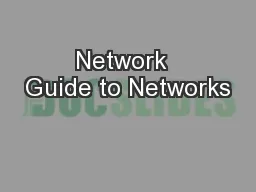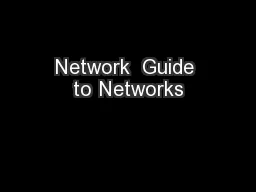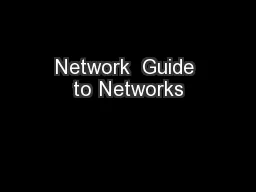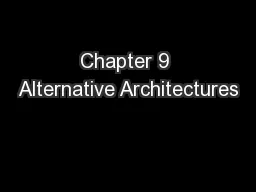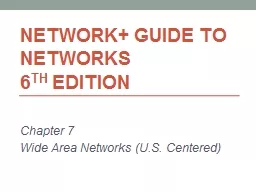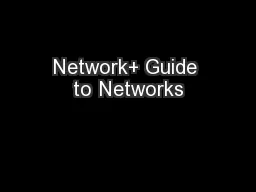PPT-Common network architectures for PBB, PBB-TE and EOTN networks
Author : miller | Published Date : 2024-02-02
Maarten Vissers 20110511 1 PBB and PBBTE network EVCCVLAN via ECSVLAN PEB IBEB BC B IBBEB CBP CNP PIP PNP IBBEB IBBEB BC B CBP CNP CBP CNP I S I S BI BI
Presentation Embed Code
Download Presentation
Download Presentation The PPT/PDF document "Common network architectures for PBB, PB..." is the property of its rightful owner. Permission is granted to download and print the materials on this website for personal, non-commercial use only, and to display it on your personal computer provided you do not modify the materials and that you retain all copyright notices contained in the materials. By downloading content from our website, you accept the terms of this agreement.
Common network architectures for PBB, PBB-TE and EOTN networks: Transcript
Download Rules Of Document
"Common network architectures for PBB, PBB-TE and EOTN networks"The content belongs to its owner. You may download and print it for personal use, without modification, and keep all copyright notices. By downloading, you agree to these terms.
Related Documents

